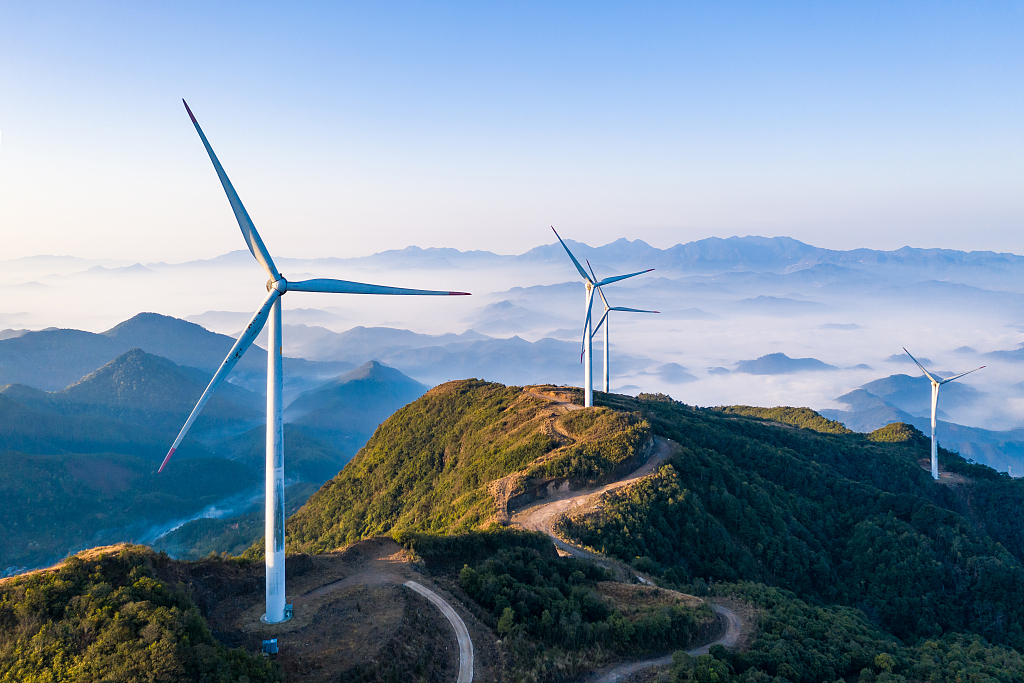China has rolled out a raft of measures to significantly increase its installed wind and solar power capacity in the latest step toward a low-carbon, secure and efficient energy mix.
From more suitable power grids to technological breakthroughs and financial support, an official action plan issued on Monday specifies a total of 21 policies to bring the country's combined wind and solar power capacity to 1.2 billion kilowatts by 2030.
China has fast-tracked its green drive in recent years, bringing a boom in development within the new-energy sector and a world-beating installed capacity. Electricity derived from wind and solar energy has accounted for 11.7 percent of China's total power generation.

A wind power station in southern China's Guangxi Zhuang Autonomous Region. /VCG
A wind power station in southern China's Guangxi Zhuang Autonomous Region. /VCG
The sector has basically entered a new phase that features affordable prices and no subsidies, the document said, while still listing several restraining factors, such as lagging power grids and limited land resources.
For the large-scale, high-quality development of the new-energy sector in the long run, "one of the core tasks is to accelerate the effective and reliable replacement of fossil fuels by new-energy sources," said Du Zhongming, president of the Electric Power Planning and Engineering Institute.
According to the plan, China will accelerate building large wind power and photovoltaic bases in deserts and will, in the meantime, encourage distributed power generation in villages, industrial parks and building rooftops. By 2025, half of the new public institution buildings will have solar power facilities on their rooftops.
To promote the wider use of new energy, power grids will be improved to accept more power from distributed new-energy projects. Efforts will also be made to push forward the share of new energy in the electricity market.

By 2025, half of the new public institution buildings will have solar power facilities on their rooftops. /VCG
By 2025, half of the new public institution buildings will have solar power facilities on their rooftops. /VCG
National new-energy labs will be built, with the emphasis placed on basic theoretical research and cutting-edge and disruptive technologies. More energy will also be channeled into making breakthroughs in solar cells and wind power equipment. The technology of recycling wind turbines and photovoltaic modules is also highlighted.
The new-energy industry will receive stronger intellectual property protection, and China will work to improve international cooperation in the area. There will also be more fiscal and financial policy support for new-energy development, such as from green bonds and credit.
The plan was created by the National Development and Reform Commission and the National Energy Administration and was published by the General Office of the State Council.
(Cover image via VCG.)
(If you want to contribute and have specific expertise, please contact us at nature@cgtn.com.)
Source(s): Xinhua News Agency

